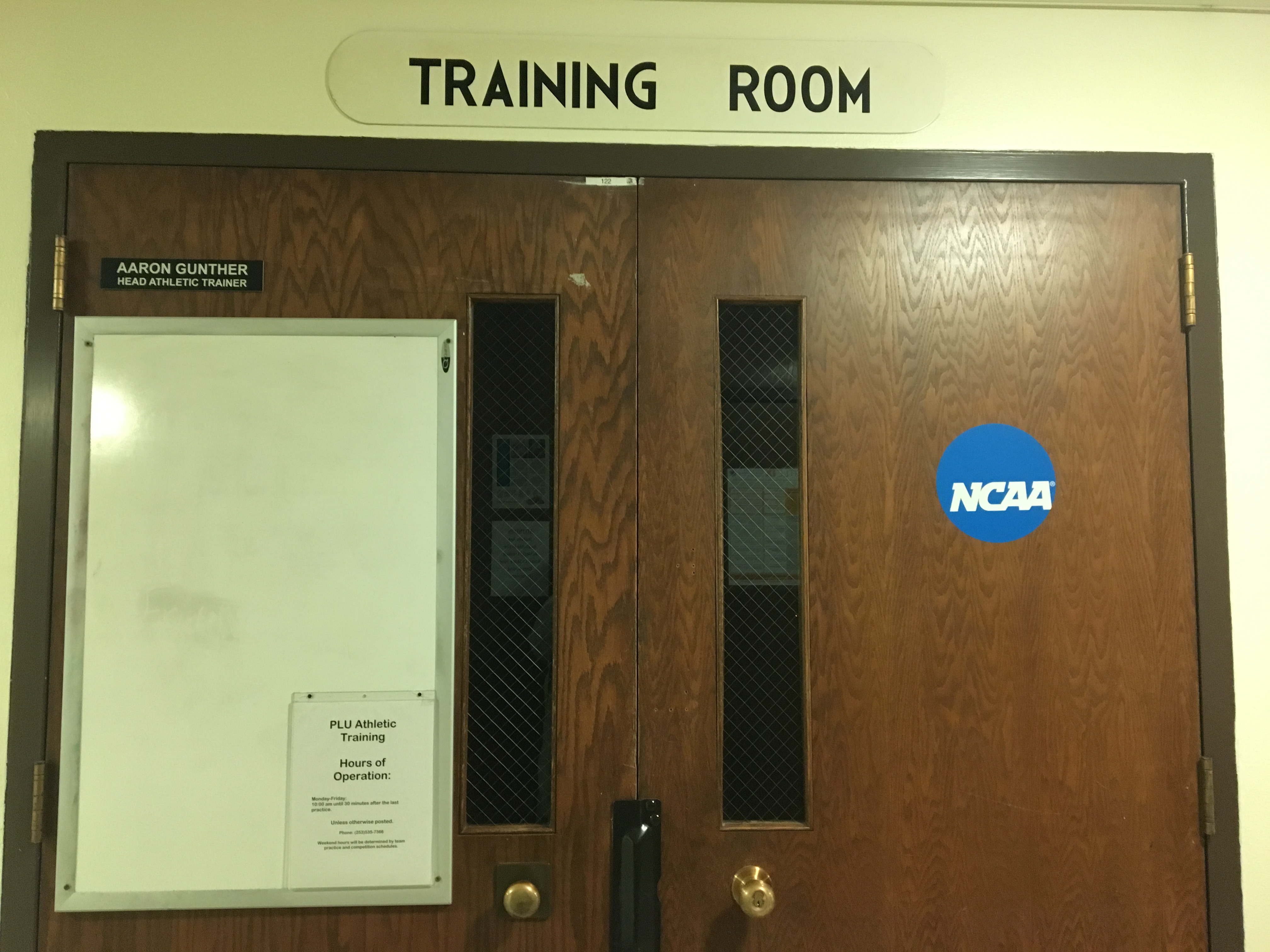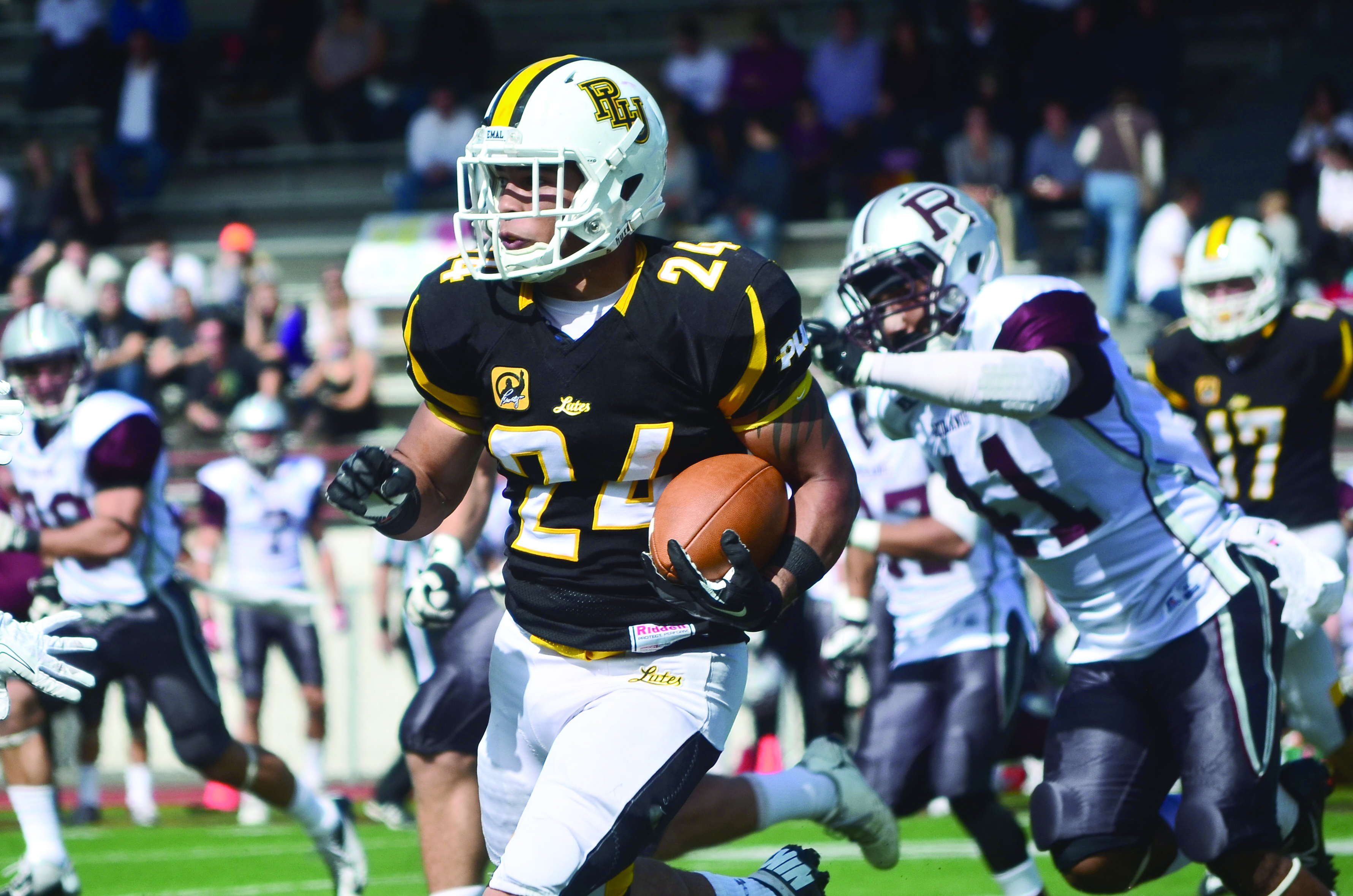GENNY BOOTS; Guest Writer; bootsjg@plu.edu
Editor’s note: This article and the subsequent reporting was done by a member of the women’s frisbee team.
It’s a good thing the Pacific Lutheran University’s men’s lacrosse team has a player who is a nursing major. Because when someone rolls an ankle at practice, he’s the go-to guy for getting taped.
A rolled ankle for a PLU varsity athlete means a trip to the training room, where ice, rehab and advice from the three full-time athletic trainers are readily available.
There are six club sports at PLU: women’s and men’s ultimate frisbee, lacrosse, men’s rowing and cheerleading. None have access to the athletic training room.
“It’s hard to rehab our players and it’s a lot harder to make sure that they don’t get injured before something happens,” junior Ian Svasand and a captain of the men’s lacrosse team said.
And injuries are common with these club sports. According to a study in the International Journal of Sports Therapy, “Ultimate accounted for one of the highest number of reported injuries among all club sports.” The concussion rates in lacrosse are a growing concern as the sport becomes more popular. In a study released by the American Journal of Sports Medicine, concussions were the second most common injury after sprains and strains.
Lacrosse and ultimate frisbee are required to have a trainer on site for home games, but what happens if a player gets injured at practice? They can make an appointment at the Health Center or go to the hospital, but mostly they are on their own, says Svasand.
“We have to learn it all ourselves and go off what we all know from each other,” he said.
None of this is news to Coordinator of Recreations Rob Thompson.
“Ideally, I would like our club sports to have access to trainers,” Thompson said. “It would be great, but how we are set up right now, I think it will be a challenge for sure.”
Currently, club sports and varsity sports sit on different sides of the athletic department. Club sports and intramurals are funded through the Wellness Access Plan, which is a yearly fee of $175 that students pay on top of tuition. This fund also covers the Health Center and Campus Safety.
Varsity athletics are funded on an 80/20 model. PLU provides 80 percent of the budget for athletics from tuition dollars, and the other 20 percent is fundraised by the teams.
According to Thompson, the only way for club sport athletes to have a spot in the training room is to take from the Wellness Access Fund, which would mean increasing student fees or reconfiguring the current distribution.
“If we reevaluated how the Wellness Access Plan was spent, maybe, but at the same time, that would mean cutting some other programs to get trainers for our club sport programs,” said Thompson.
These two different funding lines are also paired with two different insurance lines. Varsity athletes are on a different insurance plan than club athletes. When a varsity athlete also plays a club sport, the trainers cannot treat that player for an injury sustained during a club sport.
“If they are varsity athletes, we will see them for first aid, similar to if there is an injury during a racquetball class. We will help with the injury, but then refer them on to the health center,” head athletic trainer Aaron Gunther said.
Beyond that, there is not much else Gunther and the two other trainers can do.
“We are certified first aid, we can treat that, but there are some issues when we regularly do taping,” Gunther said. “If we are not seeing an athlete regularly and we don’t have control over who is practicing and playing, there will be some liability issues.”
It might start with tape and ice, but there is little room for club sports. PLU’s small training staff is stretched thin with 19 teams and hundreds of student-athletes. During fall semester, when more sports are in season, Gunther and his team are working with 50 to 70 students a day.
“We can provide care for everybody, but it does spread us thin at times,” Gunther said. “Like in fall when we are doing 60 plus hours a week, and you know, working seven days a week regularly to cover everything.”
So what’s the solution?
For now, the status quo, which doesn’t sit right with Svasand.
“I feel like it’s a need,” Svasand said. “People’s bodies are getting hurt here. This is something you clearly want to prevent.”



















